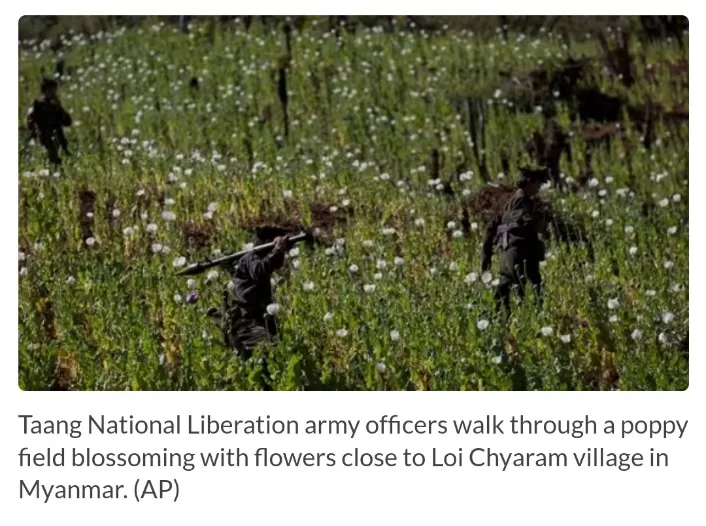In a significant shift, Myanmar has overtaken Afghanistan as the largest global producer of opium in 2023, according to the latest report released by the United Nations Office for Drugs and Crime (UNODC). Myanmar’s opium production for this year is estimated at 1,080 metric tonnes, a notable increase from the previous year’s 790 metric tonnes.
The decline in opium production in Afghanistan, plummeting by an estimated 95 percent to around 330 tonnes, is attributed to the Taliban’s ban on poppy cultivation in April last year, as reported by UNODC. The “Golden Triangle” region, encompassing Myanmar, Laos, and Thailand, has historically been notorious for illegal drug production, particularly methamphetamine and opium.
The opiate economy in Myanmar is now valued between $1 billion and $2.4 billion, equivalent to 1.7 to 4.1 percent of the country’s GDP in 2022, according to UNODC. The legal economy in Myanmar has faced challenges due to conflict and instability since the military seized power in 2021, leading many farmers to turn to poppy cultivation.
Factors such as poor access to markets, inadequate state infrastructure, and rampant inflation have contributed to the decision of farmers to cultivate more poppy. The UNODC report highlights that estimated opium production for 2022-23 is at its highest level in over two decades. Moreover, poppy cultivation in Myanmar is becoming more sophisticated, with increased investment and improved practices.
In contrast, Afghanistan, which has been the world’s leading opium producer for years, has seen a drastic reduction in cultivation after the Taliban authorities pledged to eradicate illegal drug production. Poppy crops accounted for nearly a third of Afghanistan’s total agricultural production by value last year, but the area used for poppy cultivation shrank from 233,000 hectares in late 2022 to 10,800 in 2023.
The main opium-producing region in Myanmar is Shan state, where recent weeks have witnessed heightened conflict. Shan state accounts for approximately 88 percent of the opium poppy areas nationwide, according to the UN report. The average estimated yield of opium per hectare in eastern Shan increased from 19.8 kilograms in 2022 to 29.4 kilograms in 2023.
Despite efforts to address the issue, Myanmar’s military, which assumed power in 2021, has been criticized for not taking substantial measures to curb the multi-billion dollar opium trade.
By AFP







